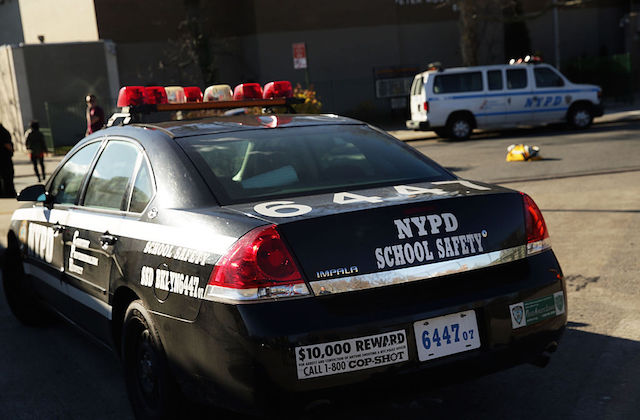Federal Government to Educators, Law Enforcement: Cops Are in Schools for Safety, Not Discipline

Just days after a South Carolina official urged the nation to rethink how police officers are deployed in schools, the Departments of Justice and Education are doing just that.
Today (September 8), Secretary of Education John B. King Jr. and the Justice Department’s Community Oriented Policing Services (COPS) Office released the Safe School-based Enforcement through Collaboration, Understanding, and Respect (SECURe) Rubrics. These guidelines are meant to ensure that state and local school districts and law enforcement agencies are “properly implementing school resources officers [SROs].”
Per Time, the National Association of School Resource Officers estimates that there are between 14,000 and 20,000 SROs working in American schools today. The COPS Office has funded 7,000+ SRO positions in the past 20 years, but most officers are supported via state and local budgets.
From a statement released by COPS Office director Ronald L. Davis:
We have seen that there is the potential for SROs to have a negative impact on students through unnecessary arrests and improper involvement in routine school discipline matters. If SROs are not properly hired, trained, evaluated and integrated into the school community—or if they are given responsibilities more appropriately carried out by educators—negative outcomes, including violations of students’ civil rights, can and have occurred. It is therefore incumbent upon all of us, including law enforcement and education leaders, to do everything we can to directly address these concerns and reduce the potential for problems.
Though the federal government cannot dictate what legislators and officials do, the rubric is accompanied by letters encouraging departments to, as King puts it in his missive, “consider setting policy and passing legislation designed to help SROs minimize citations and arrests of students and use diversion programs and other alternatives to arrest, detainment or the use of force.”
The Justice and Education Departments are pushing officials to outline the relationships between school districts, law enforcement agencies and juvenile justice entities and implement policies and daily practices that are informed by those groups, as well as students, their families, educators and civil rights advocates. The goal is to keep students out of the criminal justice system, which is disproportionately populated by Black and Latinx people. Most importantly, King stresses that it is the SRO’s role to “ensure safety and security” in schools—not administer discipline.
Some studies cited by the Congressional Research Service have linked the presence of officers in schools with an increase in arrests for low-level offenses, and The Atlantic reported in 2015 that just 12 states require SROs to take specialized training before entering classrooms.
The new guidelines come with a checklist for revising current policies and writing new ones, and they are organized around five “action steps”:
- Create sustainable partnerships and formalize memoranda of understanding (MOUs) among school districts, local law enforcement agencies, juvenile justice entities and civil rights and community stakeholders.
- Ensure that MOUs meet constitutional and statutory civil rights requirements.
- Recruit and hire effective SROs and school personnel.
- Keep your SROs and school personnel well trained.
- Continually evaluate SROs and school personnel, and recognize good performance.
The leadership of the Dignity in Schools Campaign, which works to dismantle the school to prison pipeline, supports the guidelines, but feels the government missed an opportunity for transformative reform: “While we agree that any SROs or law enforcement that come into contact with schools should receive proper youth development training, the real solution is for school districts to invest in alternatives to SROs, allocating funds towards hiring and training restorative justice practitioners, counselors, social workers and peace builders,” the organization said in a statement emailed to Colorlines. A recent study showed that three of the nation’s largest school districts have more police officers on duty than counselors.
Read the complete set of guidelines here and implementation checklists here.
